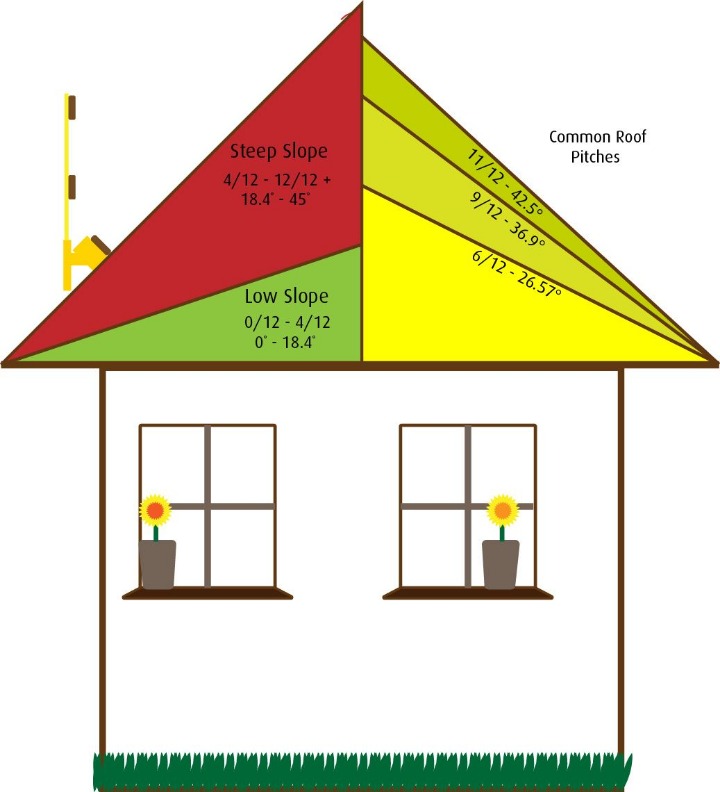When it comes to maintaining or installing roofing, understanding roof pitch safety is paramount. The angle of the roof not only affects water runoff and overall aesthetics but also directly impacts the safety measures that must be in place for workers.
The Importance of Roof Pitch in Safety Protocols
The pitch, or slope, of a roof is calculated by the amount of vertical rise over a horizontal distance. It is commonly expressed as a ratio. This figure is essential in determining the adequate safety procedures that workers need to follow.
Impact on Worker Balance and Stability
Steeper roof pitches pose significant risks, such as slips and falls. Thus, it’s crucial to implement proper safety measures when working on roofs with higher pitches. Safety harnesses, guardrails, and adequate footwear are non-negotiable in such situations.
Equipment and Tools Adaptability
Read more about Roofing safety here.
A roof’s pitch also dictates the type of equipment and tools that are suitable for the job. On a steeper slope, specialized tools that provide better grip and stability are necessary. Understanding roof pitch safety ensures the right resources are used, thereby minimizing risks.
Guidelines for Safe Roofing Practices
Establishing comprehensive guidelines based on the roof pitch is essential for a safe working environment. Here are a few key measures:
Training and Awareness
Workers should be thoroughly trained on the dangers associated with different roof pitches. Regular safety briefings and hands-on training sessions ensure that everyone is well-aware of the hazards and the safety protocols in place.
Use of Personal Protective Equipment (PPE)
Ensuring that proper PPE is worn can make a significant difference in roof pitch safety. Helmets, gloves, non-slip shoes, and fall-arrest systems should be part of the standard gear for anyone working on a roof.
Weather Conditions
Environmental factors such as rain, snow, or extreme heat can exacerbate the dangers associated with roofing tasks. Always consider weather conditions when planning work schedules. Avoid working during adverse weather where risks are heightened.
Technological Interventions
New technologies and advanced materials are continually being developed to improve roof pitch safety. These innovations include:
Aerial Drones
Drones can inspect roof pitches before workers even set foot on them, minimizing initial exposure to risks. They can capture detailed images and videos, helping in creating meticulous safety plans.
Robust Safety Gear
Modern safety harnesses and fall protection systems are evolving. These innovations provide better support and functionality, tailored specifically for various roof pitches.
Conclusion
Understanding and implementing robust roof pitch safety measures are indispensable in creating a secure working environment. Proper training, use of PPE, consideration of weather conditions, and leveraging new technologies are crucial steps in ensuring safety. By following these guidelines, the risks associated with roofing tasks can be significantly mitigated.
